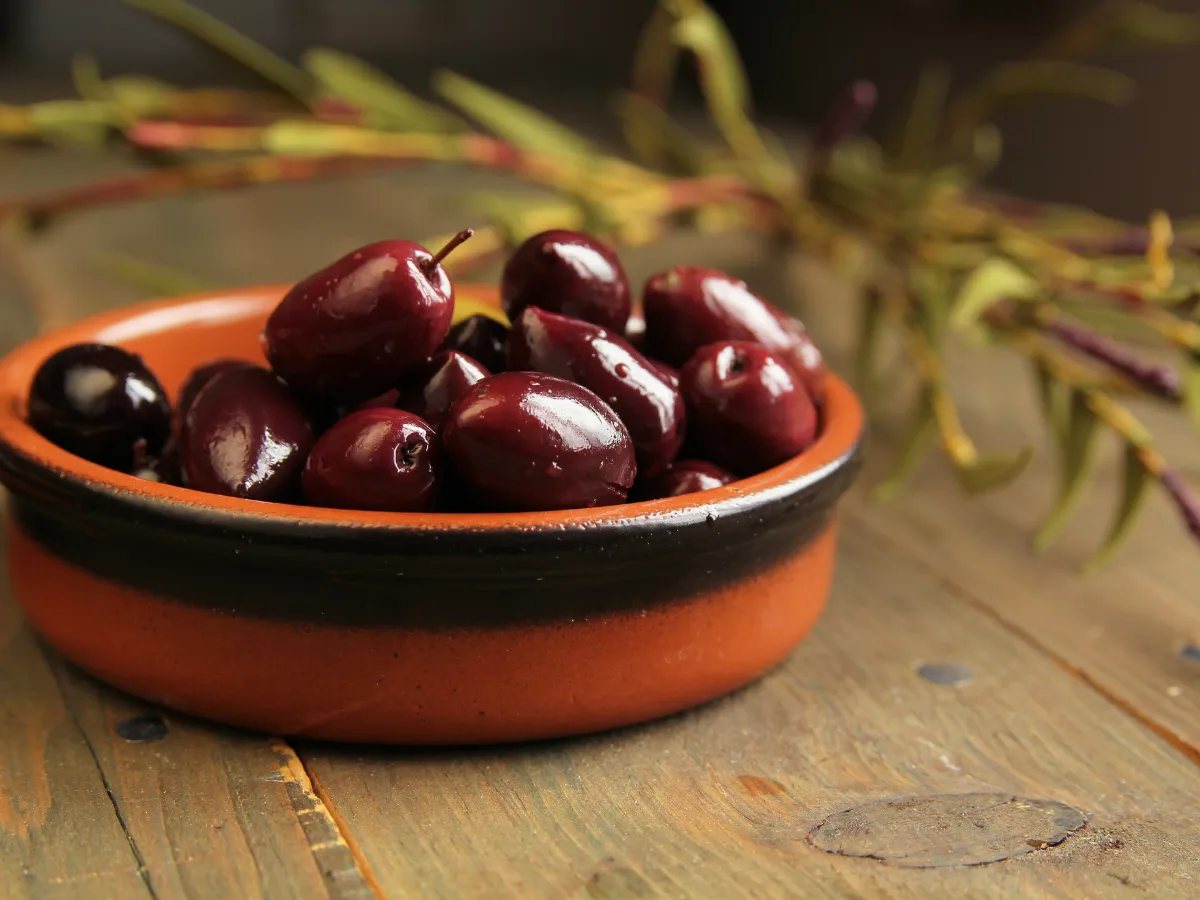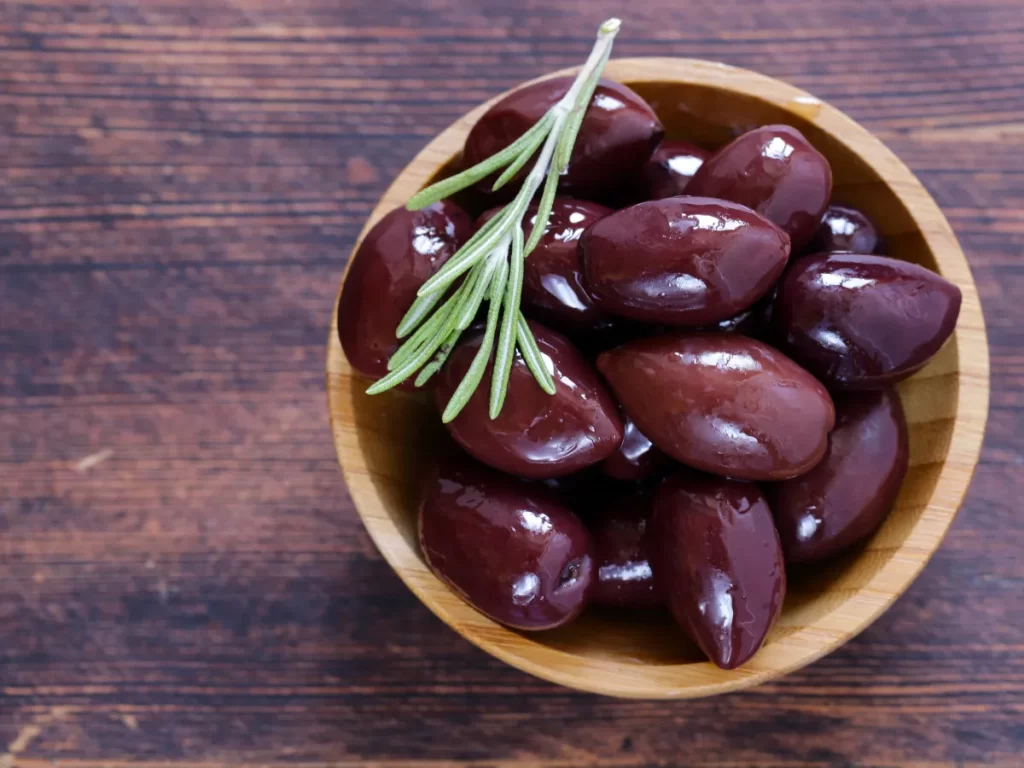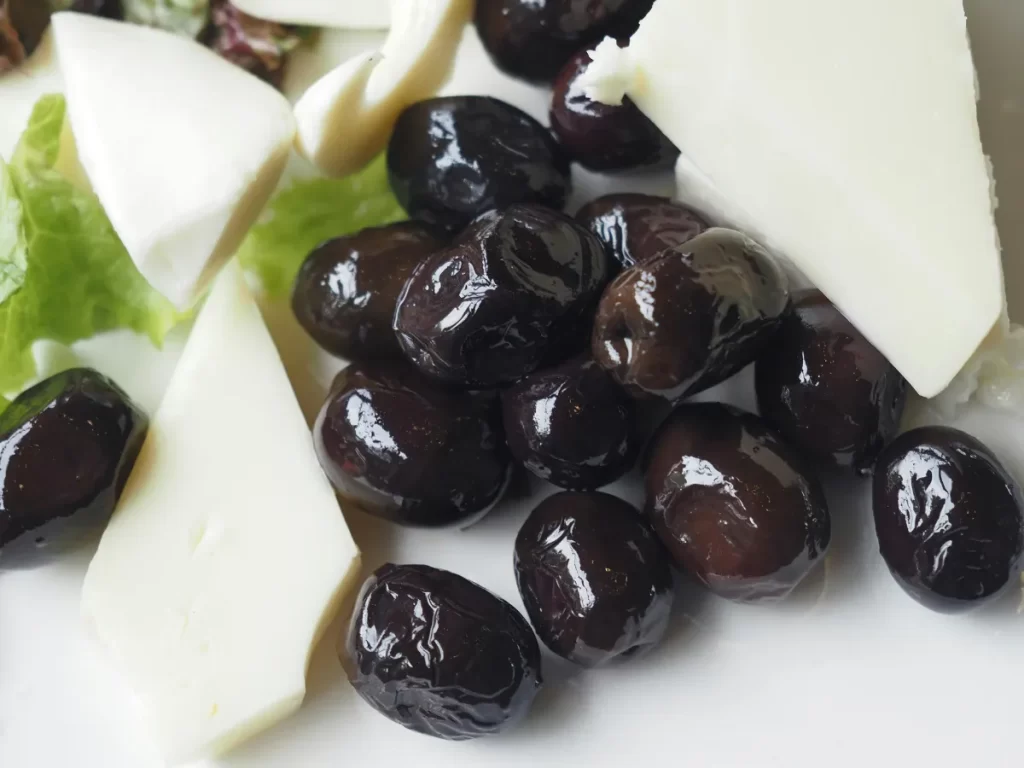Last updated on September 9th, 2025 at 05:05 am
Black Olives Calories – Black olives are more than just a flavorful addition to salads, pizzas, and Mediterranean dishes—they’re also a nutrient-packed snack with a unique calorie profile. Understanding the calories in black olives helps you enjoy their rich, savory taste while keeping your diet balanced.
These small fruits provide healthy fats, antioxidants, and a touch of fiber, making them a wise choice for heart health and satiety when eaten in moderation. Whether you’re watching your calorie intake or exploring healthy snacks, black olives deserve a closer look.
Black Olives Calories: The Tasty Truth Revealed
Do Black Olives Have the Same Antioxidants as Olive Oil?
Black olives and olive oil share many antioxidant compounds—most notably polyphenols like oleuropein, hydroxytyrosol, and tyrosol—because both come from the same fruit. These antioxidants help combat oxidative stress, lower inflammation, and protect cardiovascular health.
- However, their concentration varies: extra-virgin olive oil contains a higher, more concentrated amount of these compounds per serving, as it is extracted from large quantities of olives without dilution. Black olives still provide valuable antioxidants, especially when consumed whole, since they also offer fiber and other plant compounds not found in the oil alone. Eating both—whole olives and olive oil—ensures you benefit from the full nutritional spectrum.
Cultural Significance of Black Olives in Greek Cuisine
In Greek culinary tradition, black olives are more than a food—they are a symbol of hospitality, abundance, and the Mediterranean way of life. They are often served at the start of a meal alongside bread, cheese, and wine, representing a warm welcome.
- Many Greek villages have age-old curing methods that have been passed down for generations, giving each region’s olives a unique taste profile. Black olives are integral in dishes like Horiatiki (Greek salad), traditional breads, and meze platters. They also carry spiritual and historical meaning—olive trees were sacred in ancient Greece, associated with Athena, the goddess of wisdom, and considered a gift of peace and prosperity.
Are Black Olives Healthier than Green Olives?
Whether black or green olives are “healthier” depends on what you’re looking for nutritionally. Black olives tend to have slightly more healthy fats and are often softer and milder in flavor. They are also somewhat higher in iron due to the longer ripening process.
- Green olives, harvested earlier, typically contain more sodium (because of curing methods) and slightly fewer calories per serving. Both are rich in monounsaturated fats, vitamin E, and antioxidants. From a health perspective, variety is best—eating both provides a broader range of flavor, texture, and nutrient profiles, while keeping an eye on sodium levels.
Black Olives: Your Nutrition & Culinary Guide (Q&A)
| Question | Answer |
|---|---|
| What are the health benefits of black olives? | Black olives are a nutritional powerhouse! They are rich in **monounsaturated fats** (like oleic acid), which are beneficial for heart health. They also contain potent **antioxidants** (such as polyphenols and Vitamin E) that combat free radical damage, potentially reducing the risk of chronic diseases like cancer and heart disease. Additionally, they provide dietary fiber for digestion, iron for red blood cell formation, and Vitamin A for eye health. |
| Are black olives good for heart health? | Yes, absolutely! The **monounsaturated fats** in black olives can help lower “bad” LDL cholesterol levels while increasing “good” HDL cholesterol, which is crucial for cardiovascular health. Their antioxidant content also helps prevent the oxidation of cholesterol, reducing plaque buildup in arteries and lowering the risk of heart disease and stroke. |
| Do black olives have antioxidants? | Yes, black olives are packed with various **antioxidants**. Key antioxidants include Vitamin E, polyphenols (like hydroxytyrosol), and carotenoids. These compounds help protect your cells from oxidative stress and inflammation, contributing to overall health and disease prevention. Studies suggest black olives may have stronger antioxidant properties than green olives due to their ripening process. |
| Black olives nutrition facts (calories, fat, sodium)? | A typical serving of about 5 large black olives (around 22g) contains approximately:
|
| Are black olives high in sodium? | Black olives can be relatively high in sodium, primarily due to the brining and curing processes used to make them edible. A serving of 5 large olives can contain around 150-200mg of sodium, which is about 7-9% of the daily recommended value. If you’re managing sodium intake, look for low-sodium varieties or rinse them before use. |
| Black olives and vitamin E content? | Black olives are a good source of **Vitamin E**, a powerful fat-soluble antioxidant. Vitamin E is crucial for protecting cell membranes from oxidative damage, supporting immune function, and promoting healthy skin and hair. This nutrient works synergistically with the healthy fats in olives to enhance its protective effects. |
| How to use black olives in cooking? | Black olives are incredibly versatile in the kitchen! They add a rich, savory, and slightly briny flavor. You can:
|
| Best black olive recipes? | Some popular and delicious black olive recipes include:
|
| Black olive tapenade recipe? | A simple black olive tapenade involves blending pitted black olives (like Kalamata or Niçoise) with olive oil, capers, garlic, and a squeeze of lemon juice. Some variations add anchovies, fresh herbs (like thyme or rosemary), or a touch of Dijon mustard. Pulse in a food processor until a coarse or smooth paste forms, then serve with crusty bread or vegetables. |
| Can you put black olives on pizza? | Absolutely! Black olives are a classic and delicious pizza topping. Their briny, earthy flavor complements a wide range of other toppings, from cheeses and vegetables to meats. Sliced black olives are particularly popular on Mediterranean-style pizzas. |
| Black olives in Mediterranean cuisine? | Black olives are a cornerstone of **Mediterranean cuisine**. They are used extensively in salads, pasta dishes, stews, and as part of mezze platters. Their distinct flavor is integral to dishes from Greece, Italy, Spain, and North Africa, contributing to the region’s healthy and flavorful diet. |
| What dishes pair well with black olives? | Black olives pair exceptionally well with:
|
| What are the different types of black olives? | Many olive varieties can become black when fully ripened or processed to turn black. Some common types include:
|
| How are black olives processed? | Black olives can be processed in a few ways. Naturally ripened black olives are typically cured in brine (salt water) for several months to reduce bitterness. Many commercially available “black olives” (like California-style) are actually picked green and then treated with lye and exposed to air (oxidized) to turn them uniformly black and mild in flavor, followed by brining and canning. |
| Are black olives dyed? | Commercially produced “canned black olives” (often labeled “ripe black olives”) are typically **not dyed** in the traditional sense. Instead, they are picked green and then undergo a specific curing process involving lye and aeration (bubbling air through the solution). This oxidation process causes the olives to turn a uniform dark black color. Iron salts (like ferrous gluconate) may be added to stabilize this color. Naturally ripened black olives, like Kalamata, achieve their dark color through maturation on the tree. |
| Difference between green and black olives? | The primary difference is ripeness and processing. **Green olives** are picked unripe and are firmer and more bitter, often cured in lye and then brined. **Black olives** are typically picked when fully ripe (or processed to appear so), making them softer, less bitter, and often fruitier. Their flavor profiles and textures differ significantly due to these factors. |
| Where do black olives come from? | Olives, including varieties that yield black olives, originate from the Mediterranean basin. Today, they are cultivated globally in regions with Mediterranean climates, including Spain, Italy, Greece, Turkey, Morocco, California (USA), Australia, and parts of South America. Each region often has its own traditional varieties and curing methods. |
| Black olives vs. Kalamata olives? | **Kalamata olives** are a specific type of black olive, originating from Kalamata, Greece. They are distinct for their almond shape, dark purple-brown color, and rich, fruity, and somewhat briny flavor. While all Kalamata olives are black olives, not all black olives are Kalamata. Many “black olives” found in cans are often Mission olives processed to be uniformly black and milder. |
| How to store black olives? | Once opened, canned or jarred black olives should be transferred to an airtight container with their brine (if applicable) and refrigerated. They typically last for a few weeks to a couple of months. Dry-cured olives should be stored in a cool, dark place or refrigerated, often in olive oil, and can last longer. Always check the packaging for specific storage instructions. |
| Are canned black olives healthy? | Canned black olives can be a healthy part of a balanced diet. They retain many of their beneficial nutrients like healthy fats, antioxidants, and fiber. However, they can be high in sodium due to the canning process. Choosing low-sodium varieties or rinsing them can help reduce sodium content. Always consume them in moderation as part of a varied diet. |
Conclusion – Black Olives Calories
Black olives are a flavorful, nutrient-rich food that can enhance both taste and health. With just 115 calories per 100g, black olives provide calories primarily from healthy fats, making them a satisfying addition to salads, pasta, or Mediterranean dishes. They provide beneficial nutrients, including vitamin E, iron, and fiber, while being naturally cholesterol-free.
When enjoyed in moderation, black olives calories support heart health and satiety without derailing your diet. Incorporating black olives into balanced meals offers both flavor and wellness in every bite.






